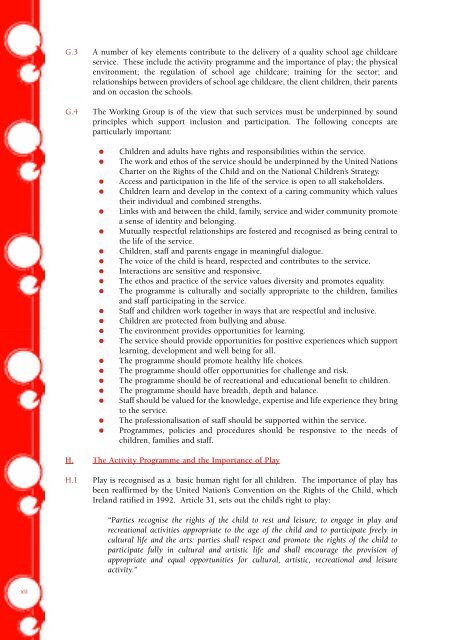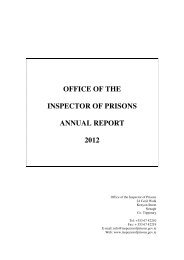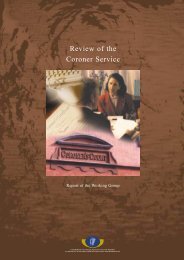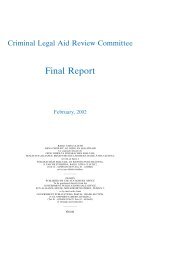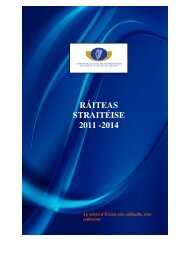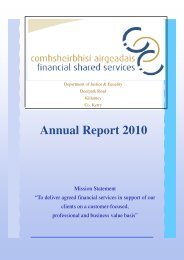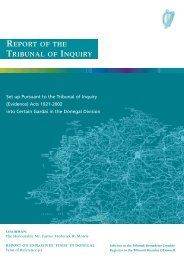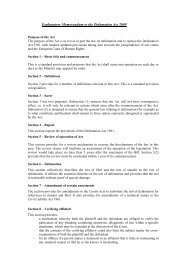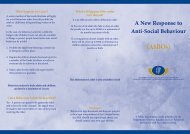Developing School Age Childcare - Department of Children and ...
Developing School Age Childcare - Department of Children and ...
Developing School Age Childcare - Department of Children and ...
You also want an ePaper? Increase the reach of your titles
YUMPU automatically turns print PDFs into web optimized ePapers that Google loves.
G.3 A number <strong>of</strong> key elements contribute to the delivery <strong>of</strong> a quality school age childcareservice. These include the activity programme <strong>and</strong> the importance <strong>of</strong> play; the physicalenvironment; the regulation <strong>of</strong> school age childcare; training for the sector; <strong>and</strong>relationships between providers <strong>of</strong> school age childcare, the client children, their parents<strong>and</strong> on occasion the schools.G.4 The Working Group is <strong>of</strong> the view that such services must be underpinned by soundprinciples which support inclusion <strong>and</strong> participation. The following concepts areparticularly important:<strong>Children</strong> <strong>and</strong> adults have rights <strong>and</strong> responsibilities within the service.The work <strong>and</strong> ethos <strong>of</strong> the service should be underpinned by the United NationsCharter on the Rights <strong>of</strong> the Child <strong>and</strong> on the National <strong>Children</strong>’s Strategy.Access <strong>and</strong> participation in the life <strong>of</strong> the service is open to all stakeholders.<strong>Children</strong> learn <strong>and</strong> develop in the context <strong>of</strong> a caring community which valuestheir individual <strong>and</strong> combined strengths.Links with <strong>and</strong> between the child, family, service <strong>and</strong> wider community promotea sense <strong>of</strong> identity <strong>and</strong> belonging.Mutually respectful relationships are fostered <strong>and</strong> recognised as being central tothe life <strong>of</strong> the service.<strong>Children</strong>, staff <strong>and</strong> parents engage in meaningful dialogue.The voice <strong>of</strong> the child is heard, respected <strong>and</strong> contributes to the service.Interactions are sensitive <strong>and</strong> responsive.The ethos <strong>and</strong> practice <strong>of</strong> the service values diversity <strong>and</strong> promotes equality.The programme is culturally <strong>and</strong> socially appropriate to the children, families<strong>and</strong> staff participating in the service.Staff <strong>and</strong> children work together in ways that are respectful <strong>and</strong> inclusive.<strong>Children</strong> are protected from bullying <strong>and</strong> abuse.The environment provides opportunities for learning.The service should provide opportunities for positive experiences which supportlearning, development <strong>and</strong> well being for all.The programme should promote healthy life choices.The programme should <strong>of</strong>fer opportunities for challenge <strong>and</strong> risk.The programme should be <strong>of</strong> recreational <strong>and</strong> educational benefit to children.The programme should have breadth, depth <strong>and</strong> balance.Staff should be valued for the knowledge, expertise <strong>and</strong> life experience they bringto the service.The pr<strong>of</strong>essionalisation <strong>of</strong> staff should be supported within the service.Programmes, policies <strong>and</strong> procedures should be responsive to the needs <strong>of</strong>children, families <strong>and</strong> staff.H. The Activity Programme <strong>and</strong> the Importance <strong>of</strong> PlayH.1 Play is recognised as a basic human right for all children. The importance <strong>of</strong> play hasbeen reaffirmed by the United Nation’s Convention on the Rights <strong>of</strong> the Child, whichIrel<strong>and</strong> ratified in 1992. Article 31, sets out the child’s right to play:“Parties recognise the rights <strong>of</strong> the child to rest <strong>and</strong> leisure, to engage in play <strong>and</strong>recreational activities appropriate to the age <strong>of</strong> the child <strong>and</strong> to participate freely incultural life <strong>and</strong> the arts: parties shall respect <strong>and</strong> promote the rights <strong>of</strong> the child toparticipate fully in cultural <strong>and</strong> artistic life <strong>and</strong> shall encourage the provision <strong>of</strong>appropriate <strong>and</strong> equal opportunities for cultural, artistic, recreational <strong>and</strong> leisureactivity.”xii


